8 reasons why you need a telephoto lens in your landscape kit
When we think about landscape photography we usually think about those epic you-can-step-right-into-the-scene kind of shots that you get from an ultra wide angle lens.
However, there are certain elements that a compelling wide angle shot depends on; a strong foreground, leading lines and an interesting sky, and when these elements are lacking a wide angle lens can actually diminish the impact of the image. It’s at these times when we need to look at the landscape from a different perspective.
By definition, a telephoto lens is anything longer than a 50mm equivalent focal length but in real terms focal lengths of around 70mm or longer which noticeably bring distant objects closer are what we think of when we talk about telephotos. Here's why they are great:
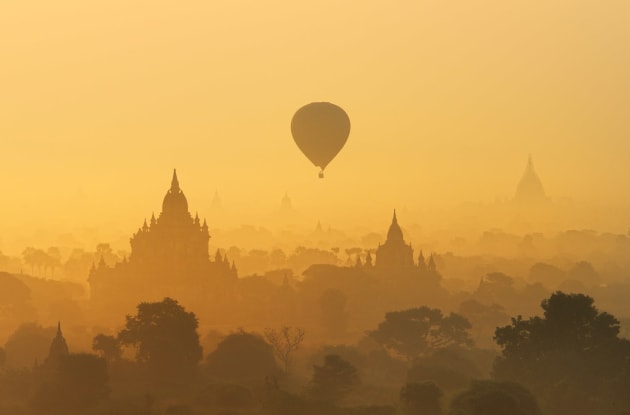
1. They compress perspective
Wide angle lenses increase the distance between the foreground elements, which look very close, and the background elements, which look really far away. A telephoto lens does the opposite, it compresses the perspective, squeezing all the elements in the frame together, flattening the scene so there’s no longer a foreground or background.
This works really well for landscapes with layers like mountain ranges, hills or desert sand dunes that stretch away into the distance, and you should look out for the ways the different layers interact with each other as they are flattened together by the telephoto lens.
Compressing perspective can also make quite distant mountains look as though they are towering above nearby buildings, villages, or even figures in the landscape, creating a dramatic sense of scale and size.
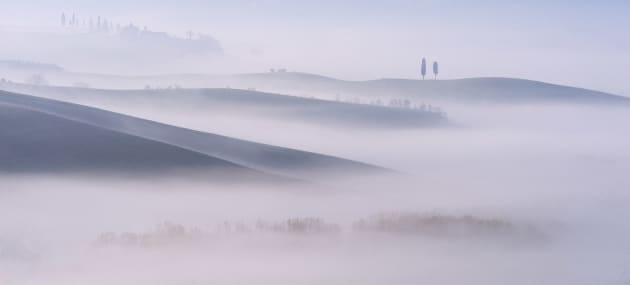
2. They're great for mist (even better if it’s backlit!)
Perspective compression works even better when atmospheric conditions like mist, fog or haze separate the different parts of the scene reinforcing the perception of layers in the landscape.
From a high vantage point a hilly or mountainous landscape can look otherworldly as the mist flows along valleys or around the contours of the land creating islands of land separated by seas of mist. A wide angle lens diminishes this kind of scene as it creates large spaces between the foreground and background, but by compressing all the landscape elements together a telephoto lens really brings out the best of it giving it an almost watercolour painting feel.
If the mist is backlit by a rising sun the effect can be even better. This can illuminate the mist, making it glow in the golden light, or in forest or around trees the light can be scattered by the mist creating rays of light breaking through the leaves.
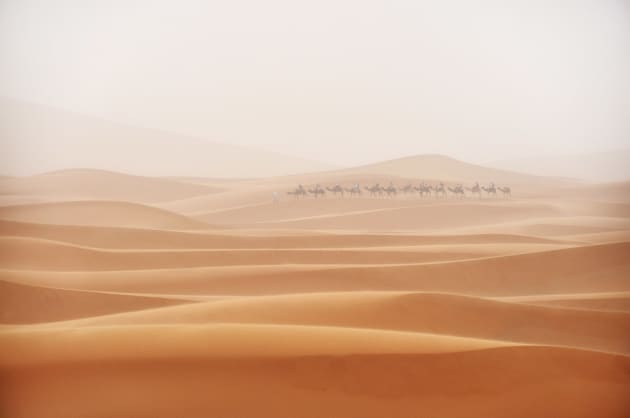
3. Look for a single point of interest in a repeated pattern
The curves of hills or sand dunes and the peaks of mountains make for fascinating repeated patterns when compressed together with a telephoto lens. Look for how the lines and forms of the landscape interact with each other and try filling the frame with these repeated shapes from top to bottom, distilling the landscape into a composition that look almost like a two dimensional pattern.
The trick here is to find a harmonious balance and a single point of interest that interrupts the pattern, like a camel train amidst ever-receding dunes, or a tree standing on the brow of a hill as mist swirls around it and neighbouring hills.
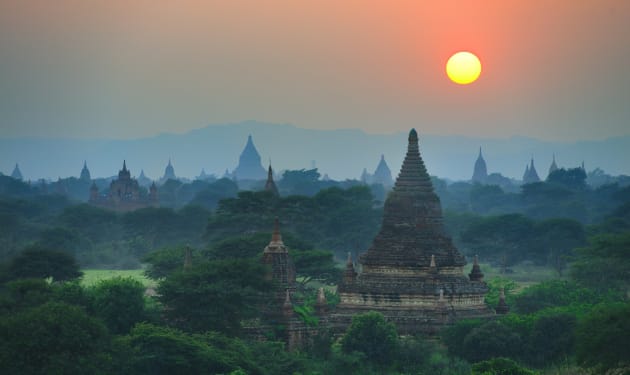
4. Exclude uninteresting foregrounds and highlight the most interesting part of the scene
For a wide angle lens you really need an interesting element to include in the foreground but sometimes there really isn’t anything that works. In fact, sometimes the foreground can be uninteresting or downright ugly and when the point of interest is quite distant from where you are standing a telephoto lens can 'reach' out across the uninspiring foreground and exclude it from the composition.
A telephoto lens is a great as it eliminates the need for a foreground and makes distant points of interest appear much closer in the frame whilst also bringing any background in closer as well.

5. Look for minimalist compositions
Sometimes less really is more. One of the best quotes I read about composition in photography goes along the lines of “subtract everything that is distracting and unnecessary until only the essential remains”. This is particularly true with telephoto lenses as they force you away from trying to 'get it all in', an approach which almost always results in the image looking messy and over-complicated.
Our eyes and brains respond to ordered and simple designs and whenever we compose a scene we should be attempting to identify it’s essence; what it is exactly that makes us want to photograph it. Try to identify how can we refine that essence, focus on it and remove everything from the image that isn’t part of it and which may divert attention and detract from it.
Because a telephoto lens limits how much of a scene you can fit in the frame, it really encourages an approach of reducing a shot to its most basic elements.
A good way to do this is focusing on the form and shape of the landscape as mentioned above. Sometimes it might be just about how the light interacts with a particular part of the scene, like sunbeams breaking through cloud and hitting the ocean, or the different light and shade in a landscape. Then compose by excluding everything else from the frame.
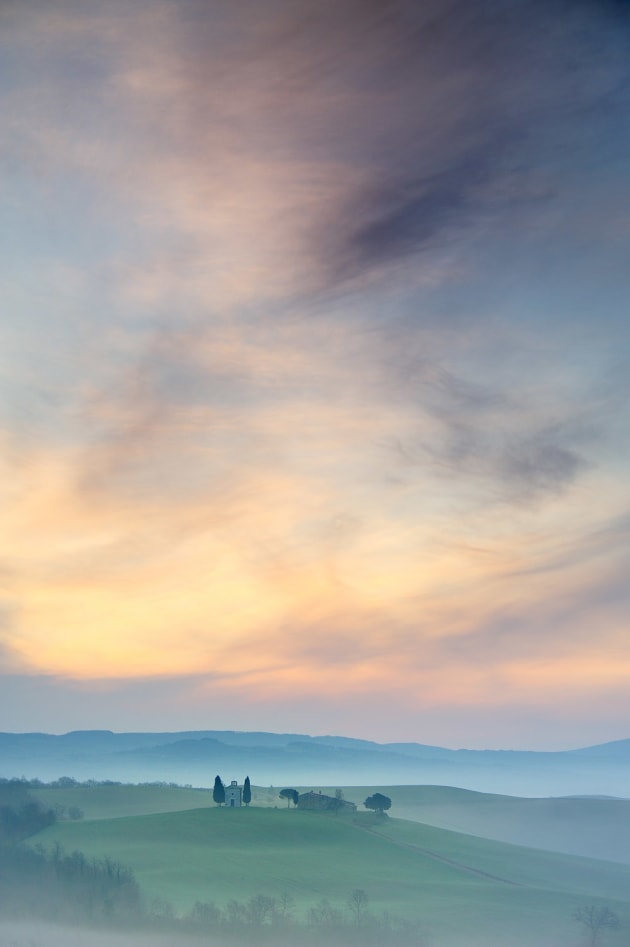
6. Don’t worry about the sky
The sky, which is usually essential in wide angle images, can occasionally be an element of the composition which distracts from the image. A flat boring sky or grey overcast weather rarely add anything to a scene and yet these are the kinds of conditions that are often prevalent in misty or foggy conditions. Don’t be afraid to just cut them out of the composition and focus on the landscape. Frame the key elements of the scene tightly, zooming in to remove boring skies so the viewfinder is filled from top to bottom with the most interesting parts of the landscape.

7. Create abstract images
By picking out a small part of the landscape with a telephoto we are often removing it from it’s context which can create some fascinating abstract images where it’s not immediately apparent what we’re looking at. Great examples are aerial images taken from above a river estuary that look like interweaved lines of coloured fibres seen through a microscope.
For these kinds of images an elevated viewpoint where you can look down onto the landscape really helps create interesting angle on the scene, and once again cutting out the sky is a good idea. Look for fields with different coloured crops or a road snaking through a contrasting landscape, anything with strong shapes or lines.
Perhaps broken cloud means that part of the landscape is beautifully lit whilst another is in shadow, or maybe currents or breaking waves are creating different shades and textures in an ocean when viewed from overlooking cliffs. When looking through the viewfinder with the lens at a long focal length even minor adjustments to where your pointing your camera will make significant changes to the composition and it quickly becomes apparent that there are seemingly an infinite number of compositions, so don’t be afraid to experiment by constantly refining the framing.
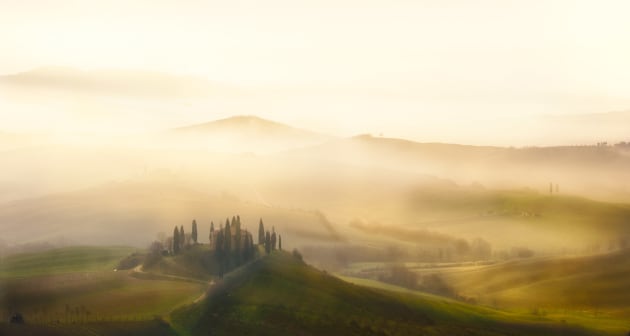
8. Create unusual compositions
Rules are meant to be broken, and while most of the time the rule of thirds is a fantastic guiding principle for composition, breaking it can occasionally create some really striking images. This is certainly true with telephoto lenses. Creative framing with large amounts of negative space in one part of the image, like having large amounts of sky or desert, can really create a dramatic sense of scale.
Look for fascinating skies above isolated elements of the landscape and compose with sky covering three quarters or more of the image. Solitary trees or buildings, or perhaps a figure standing on a rocky outcrop work well juxtaposed against large areas of sky or other huge elements of the landscape like a rock face or the bottom or a waterfall. Once we get used to the longer compressed perspective of a telephoto lens, it’s amazing how creative we can be with landscape compositions. ❂



